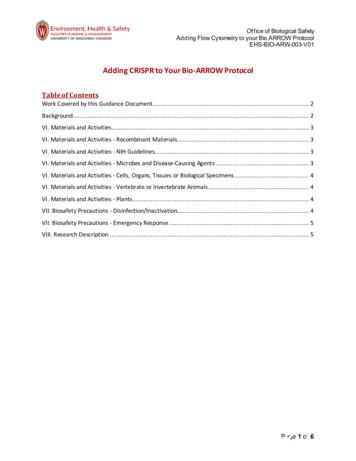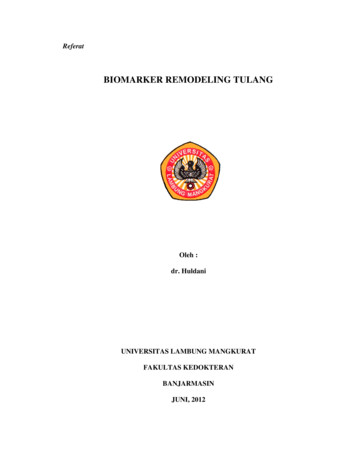Crispr Mouse IGI - Innovative Genomics Institute (IGI)
CRISPR Applications: MouseLin HeUC-Berkeley
Advantages of mouse as a model organismsimilar to humanCan be genetically manipulatedIsogenic and congenic genetic backgroundAn accelerated lifespan.Well-characterized biologyA cost-effective and efficient research tool.
Key technical advance in reverse mouse geneticsIntrauterine transfer of in vitro cultured embryoAnn McLaren, 1959Chimeric animal by morula aggregation and blastocyst injection (50-60s)Andrzej Tarkowski, Beatric Mintz: morula aggregation (8C aggregates)Richard Gardner, Ralph Brinster (blastocyst injection)Cell culture model to study development (ES cells)Evans, Martin, Kaufman (70s and 80s)Homologous recombination in ES cells (late 80s)Mario Capecchi, Olivier SmithiesMario Capecchi and Kirk Thomas First gene-targeting in ES cells 1989Knockout mice:Oliver Smithies, Rudolf Jaenisch: Generation of knockout mice, beta-2macroglobulin (1990)Andreas Nagy: tetraploid complementation (1993)
Pre-implantation Development
Key technical advance in reverse mouse geneticsIntrauterine transfer of in vitro cultured embryoAnn McLaren, 1959Chimeric animal by morula aggregation and blastocyst injection (50-60s)Andrzej Tarkowski, Beatric Mintz: morula aggregation (8C aggregates)Richard Gardner, Ralph Brinster (blastocyst injection)Cell culture model to study development (ES cells)Evans, Martin, Kaufman (70s and 80s)Homologous recombination in ES cells (late 80s)Mario Capecchi, Olivier SmithiesMario Capecchi and Kirk Thomas First gene-targeting in ES cells 1989Knockout mice:Oliver Smithies, Rudolf Jaenisch: Generation of knockout mice, beta-2macroglobulin (1990)Andreas Nagy: tetraploid complementation (1993)
Mouse preimplantation ula blastocystRestricted potentialTotipotentTETEICM
Totipotent and pluripotent cell fate a blastocystRestricted potentialTotipotentTETEPEEpiblast
mir-34a is enriched in embryonic stem cells (ESCs)oocytezygote2-cell4-cell8-cellmorula blastocystOct4Nanogsox2Embryonic stem cellspluripotent
Key technical advance in reverse mouse geneticsIntrauterine transfer of in vitro cultured embryoAnn McLaren, 1959Chimeric animal by morula aggregation and blastocyst injection (50-60s)Andrzej Tarkowski, Beatric Mintz: morula aggregation (8C aggregates)Richard Gardner, Ralph Brinster (blastocyst injection)Cell culture model to study development (ES cells)Evans, Martin, Kaufman (70s and 80s)Homologous recombination in ES cells (late 80s)Mario Capecchi, Olivier SmithiesMario Capecchi and Kirk Thomas First gene-targeting in ES cells 1989Knockout mice:Oliver Smithies, Rudolf Jaenisch: Generation of knockout mice, beta-2macroglobulin (1990)Andreas Nagy: tetraploid complementation (1993)
ES cell yields chimeric mouse embryos in vivoBlastocyst injection of ES cellsMorula aggregation with ES cells
ES cell derived gametes generate normal offspring
Key technical advance in reverse mouse geneticsIntrauterine transfer of in vitro cultured embryoAnn McLaren, 1959Chimeric animal by morula aggregation and blastocyst injection (50-60s)Andrzej Tarkowski, Beatric Mintz: morula aggregation (8C aggregates)Richard Gardner, Ralph Brinster (blastocyst injection)Cell culture model to study development (ES cells)Evans, Martin, Kaufman (70s and 80s)Homologous recombination in ES cells (late 80s)Mario Capecchi, Olivier SmithiesMario Capecchi and Kirk Thomas First gene-targeting in ES cells 1989Knockout mice:Oliver Smithies, Rudolf Jaenisch: Generation of knockout mice, beta-2macroglobulin (1990)Andreas Nagy: tetraploid complementation (1993)
Tetraploid complementation- All ES cell mouseTetraploid embryoES cells
Gene targeting using ESCsConstruction the targeting vectorsHomologous recombination in ESCsScreening edited ESCs by southern3-6 monthsBastocyst injection of ESCsGenerate viable, fertile chimeras3 monthsThis step is often efficientGermline transmissionGenerate heterozygous mice3 months
Transgenic miceZygote pronuclear injectionHoldingpipetteFast genome editing (3-4 months)Germline transmission is easylimited editing capacityPronucleus injectionPhenotype can be evident in founders
Gene targeting using ESCsTransgenics3-6 m3m3m 1m3m
Application of CRISPR editing in miceGermline mouse modelsTransmittable genetic allelesMultiple genetic manipulationsSimple design and easy manipulationOne-step CRISPR editing of mouse zygotes (simple editing)CRISPR editing of ES cells (complex editing)Somatic mouse modelsRecapitulate the somatic nature of some diseases (cancer)Bypass the embryonic lethality caused by whole-body knockoutTissue specific, inducible CRISPR editingTissue specific delivery of the CRISPR systemInducible Cas9 mouse models enable somatic editing.
Application of CRISPR editing in miceGene knockout / simple modificationsGenomic structural variationslarge deletion (up to 1.6 Mb)duplicationtranslocationinversion
CRISPR genome editing in mouse ES cellsTargeting ESCs for multiple genes.(up to 5 genes simultaneously,2 are Y-linked)20/96 are bi-allelicly edited on all3 genesDelivery: plasmids transfectionWang et. al., Cell, 2013
The first attempt for CRISPR genome editing in miceCas9 mRNA sgRNA; Targeting Oct4-IRES-GFP/ miceZygote injection. No pronucleus injection!!1/5 was edited by NHEJShen et. al., Cell Research, 2013Wang et. al., Cell, 2013
Major considerations for CRISPR editing in miceCas9 delivery (mRNA vs. DNA)Efficiency of editingToxicity of Cas9 to mouse embryosGermline transmissionOff-target effects
CRISPR editing of single or multiple genes in vivoCas9 mRNA sgRNA zygote injectionLive birth rate 10-20% (low toxicity)Hiighly efficient NHEJ editingWang et. al., Cell, 2013
Multiplexed precise HDR-mediated genome editing in vivo20% bi-allelicly HDR edited 90% HDR edited on one geneThis is an simplified HDR!Wang et. al., Cell, 2013
Applications of HDR-editing in mouse geneticsI. Insertion of a small fragment (ssDNA donor)Donor: 42bp V5 tag, 60bp flanking homology 30% efficiencyYang et al., Cell, 2013
Applications of HDR-editing in mouse geneticsII. Insertion of a large fragment (double-stranded circular donor vector)10-20% editingSimultaneous injection of cas9 mRNA, sgRNA and DNA donor into zygote cytoplasm.Donor DNA: 2kb 3kb homology arms.Yang et al., Cell, 2013
Applications of HDR-editing in mouse geneticsIII. Generation of conditional allele (two ssDNA donors)Two LoxP in one allele: 20% efficiencyHowever, deletion is a major complicating issue for this strategyYang et al., Cell, 2013
Delivery methods for CRISPR editing in germline modelsLi et al., NBT, 2013mRNA sgRNA injection into cytoplasm, 90% NHEJ editing efficiencyLinearized DNA injection into pronucleus, 9% NHEJ editing efficiencyGermline transmission is not affected by CRISPR editingSung et al., Genome Research, 2014Cas9 RNP injection into zygote cytoplasm, 90% NHEJ editing efficiencyThe key challenging step is microinjectionChen et al., JBC, 2016Wang et al., J Genet Genomics, 2016Cas9 RNP electroporation into mouse zygotes.Efficient NHEJ and HDR editing3x increase in embryo survival (standard birth rate is 10-20%)
CRISPR-EZ: CRISPR- RNP Electroporation of ZygotesChen et al., JBC, 2016
CRISPR-EZ a highly accessible technology
CRISPR-EZ An efficient genome editing tool in vivo88% bi-allelic editing and 46% HDR editingChen et al., JBC, 2016
CRISPR-EZ: CRISPR- RNP Electroporation of ZygotesCRISPR-EZ Advantages100% Cas9 RNP deliveryHighly efficient NHEJ and HDR editingindel, point mutation, deletion, insertion 3x increase in embryo viabilityEasy, economic and high-throughputCRISPR-EZ ChallengesLarge, circular plasmid donor delivery is difficultOther Cas9 variantsOther mammals (cat, cow, pig, ect.)Chen et al., JBC, 2016
Application of CRISPR editing in miceGene knockout / modificationOne step CRISPR editing in zygotesGenomic structural variationslarge deletionduplicationtranslocationinversionCRISPR editing in ESCs or somatic cells.
A large chromosomal deletion by CRISPR editing in vivoES cell editingA large intragenic LAF4 deletion detected in a patientDeletion of laf4 has no phenotype.The 500kb deletion could lead to a truncated Laf4 protein, givingrise to malformation of limbs, shortened femur, triangular tibiaKraft et al., Cell Reports, 2015
Chromosomal rearrangement by CRISPR editing in vitroTranslocationInversionChoi et al., Nat Commun, 2014
Chromosomal rearrangement by CRISPR editing in vivoEml4–Alk inversion, express the Eml4–Alk fusion gene, display histopathologicaland molecular features typical of ALK1 human NSCLCs.Madallo et al., Nature, 2014
Chromosomal rearrangement by CRISPR editing in vivoA low efficiency editing events amplified by selective growth advantageMadallo et al., Nature, 2014
Application of CRISPR editing in miceGermline mouse modelsTransmittable genetic allelesOne-step CRISPR editing of mouse zygotesCRISPR editing of ES cells (complex editing)Somatic mouse modelsNon-transmittable genetic modificationsTissue specific, inducible CRISPR editingLow editing efficiency can be compensated by selective advantages
Tissue specific CRISPR editing in miceTissue specific delivery of CRISPR/Cas9 systemLive:Hydrodynamic injection, iv injectionPlasmid DNA, AdenovirusLung: Intratracheal injection / intranasal intubationAdenovirus, AAV, lentivirusHematopoietic cells: ex vivo engineeringLentivirus, retrovirus, DNA electroporationBrain: Stereotactic deliveryAAVInducible CRISPR/Cas9 mice
CRISPR-mediated direct mutation of cancer genesin the mouse liverDNA PlasmidHydrodynamic inj20-30% cells affectedXue et al., Nature, 2014
Interrogation of gene function in adult brain usingCRISPR-Cas970% reduction of MeCP2 positive cells in DGSwiech et al., NBT, 2014
CRISPR-Cas9 knock-in mice for inducible genome editingA Cre-dependent, Cas9 expressing miceOvercome the difficulty to deliver Cas9 to somatic cellsPlatt et al., Cell, 2014
CRISPR-Cas9 knockin mice for inducible genome editingExpansion of desired editing events in cancer modelsPlatt et al., Cell, 2014
CRISPR-Cas9 knockin mice for inducible genome editingDow et al., NBT, 2014
CRISPR editing in mice, remaining challengesGermline mouse modelsSimple design, easy manipulation, rapid and multiplex editingMore reliable sgRNA design (particularly for desirable HDR editing)Complex genome editing still requires ESCsPrecise genotyping in mouse embryosSomatic mouse modelsRapid, easy, tissue specific, inducible, multiplex genome editing.Delivery of Cas9 for building somatic mouse models. (improved viral genedelivery, improved Cas9 RNP delivery, smaller Cas9 variants, improvedCas9 mouse models)Off target effects and precise genotyping of targeted cellsThe combination of CRISPR with traditional Cre-LoxP methods could leadsto more precise modeling of human disease
CRISPR-EZ: CRISPR- RNP Electroporation of Zygotes Chen et al., JBC, 2016 CRISPR-EZ Advantages 100% Cas9 RNP delivery Highly efficient NHEJ and HDR editing indel, point mutation, deletion, insertion 3x increase in embryo viability Easy, economic and high-throughput CRISPR-EZ Challenges Larg
Adding CRISPR to your Bio ARROW Protocol Page 2 of 6. Work Covered by this Guidance Document: This guidance document covers how to add the use of CRISPR systems (e.g., CRISPR/Cas9, CRISPR/Cpf1) – whether for genome editing or other purposes (e.g., CRISPR-mediated
CRISPR ethics and vice versa. Third, we assess several key ethical considerations. Notably, while some of these concerns are specific to CRISPR technology, many, such as research on human embryos, have been debated long before the CRISPR revolution [15]. Moreover, since CRISPR is still a maturing technology, novel applications in
nents comprising CRISPR genome editing, each of which is considered next. Components of CRISPR Genome Editing Component 1: Cas9 Endonuclease The most common endonuclease used in CRISPR genome editing is the class II effector protein, Cas9, from S pyogenes (
industrial applications. Finally, the efforts of researchers paid off with the development of CRISPR, a robust molecular tool that can edit DNA at virtually any locus. CRISPR technology is igniting a revolution across the life sciences and is quickly becoming a standard tool in many labs. Given its ease-of-use and versatility, CRISPR is already .
Business Source Complete-January 2022 Page 1 of 292 Magazine 2.5-5G IGI Group Inc. 01/01/2015 Magazine 2.5G-4G IGI Group Inc. 11/01/2011 12/31/2014 Magazine 2.5G-5G IGI Group Inc. 07/01/2015 07/01/2015 Y Trade Publication 0192-1304 20/20 Jobson Healthcare Information LLC 11/01/2006 11/01/2006 Y Trade Publication 0149-1210 33 Metalproducing Penton Publishing 07/01/1999 12/31/2002 07/01/1999 12 .
IGI Global's e-Book Collection Spans Over 100 Topics, Including: Professors: Your expert opinion counts. Recommend IGI Global's e-Collections to your institution's library today. 5 e-Book Collection Asia & China: 15% North America: 20% The Middle East & Africa: 10% Oceania: 5% South & Central America: 5% India: 10% European Union .
Cancer Genomics Techniques used in genomics Structural Genomics Functional genomics Epigenomics and Epigenetics Pharmacogenomics Personalized and Regenerative medicine Clinical Genomics . different advantages of being in a noteworthy metropolitan territory.
tulang dan untuk menilai efektivitas hasil pengobatan. Hasil pemeriksaan osteocalcin cukup akurat dan stabil dalam menilai proses pembentukan tulang. Metode pemeriksaan osteocalcin adalah enzyme-linked immunosorbent assay (ELISA). Nilai normalnya adalah: 10,1 9,4 ng/ml.8 Setelah disintesis, OC dilepaskan ke sirkulasi dan memiliki waktu paruh pendek hanya 5 menit setelah itu dibersihkan oleh .























